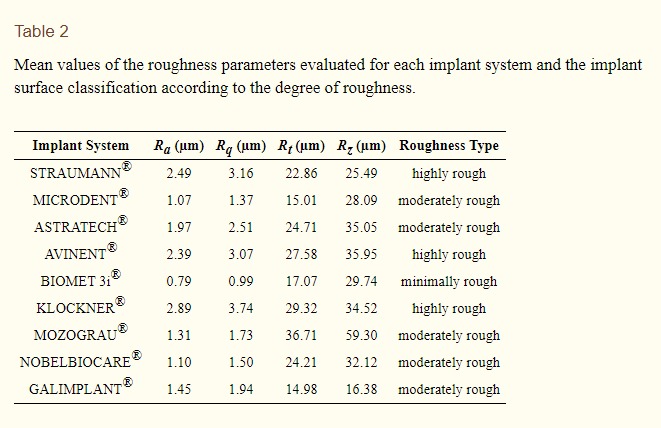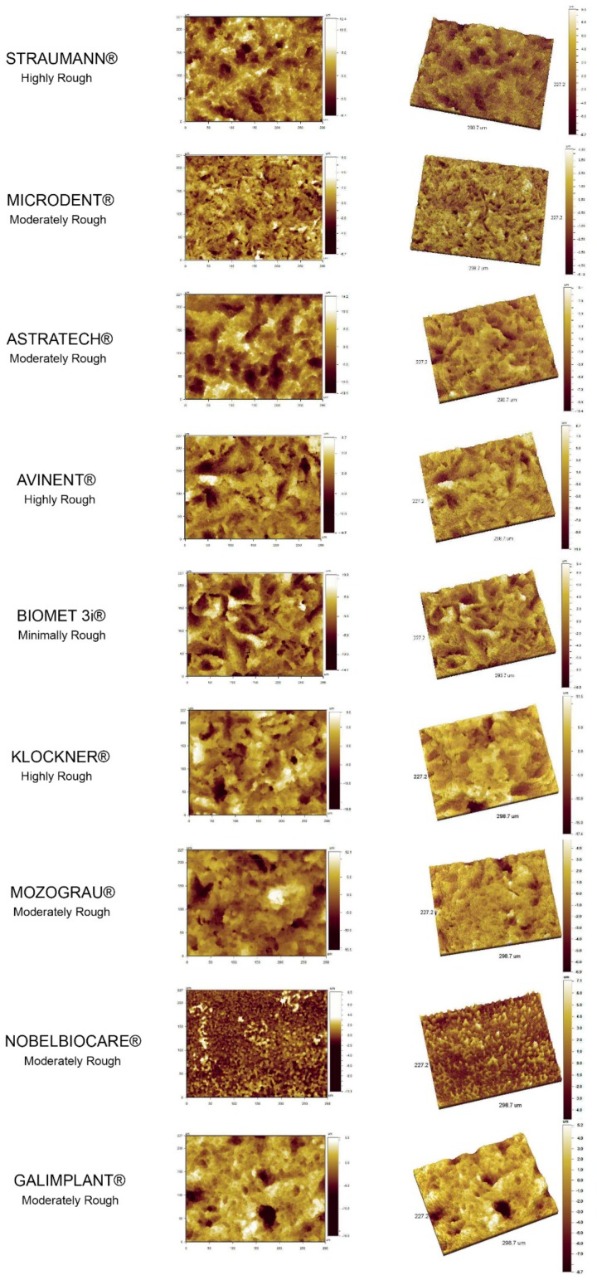Influence of the Titanium Implant Surface Treatment on the Surface Roughness and Chemical Composition
Link: https://www.ncbi.nlm.nih.gov/pmc/articles/PMC7014346/
Materials (Basel). 2020 Jan; 13(2): 314.
Published online 2020 Jan 9. doi: 10.3390/ma13020314
PMCID: PMC7014346
PMID: 31936686
Ana Isabel Nicolas-Silvente,1 Eugenio Velasco-Ortega,2,* Ivan Ortiz-Garcia,3 Loreto Monsalve-Guil,3 Javier Gil,4 and Alvaro Jimenez-Guerra3
Abstract
The implant surface features affect the osseointegration process. Different surface treatment methods have been applied to improve the surface topography and properties. Trace of different elements may appear on the implant surface, which can modify surface properties and may affect the body’s response. The aim was to evaluate the roughness based on the surface treatment received and the amount and type of trace elements found. Ninety implants (nine different surface treatment) were evaluated. Roughness parameters were measured using white-light-interferometry (WLI). The arithmetical mean for Ra, Rq, Rt, and Rz of each implant system was calculated, and Fisher’s exact test was applied, obtaining Ra values between 0.79 and 2.89 µm. Surface chemical composition was evaluated using X-ray photoelectron spectroscopy (XPS) at two times: as received by the manufacturer (AR) and after sputter-cleaning (SC). Traces of several elements were found in all groups, decreasing in favor of the Ti concentration after the sputter-cleaning. Within the limitations of this study, we can conclude that the surface treatment influences the roughness and the average percentage of the trace elements on the implant surface. The cleaning process at the implant surface should be improved by the manufacturer before assembling the implant.
Keywords: surface roughness, surface chemical composition, dental implant contamination, surface treatment technique
NOTE: Other studies show that the high roughness causes the surface to wrinkle and break when entering the hard bone and thus release particles that will bioaccumulate and can migrate into the bloodstream.


